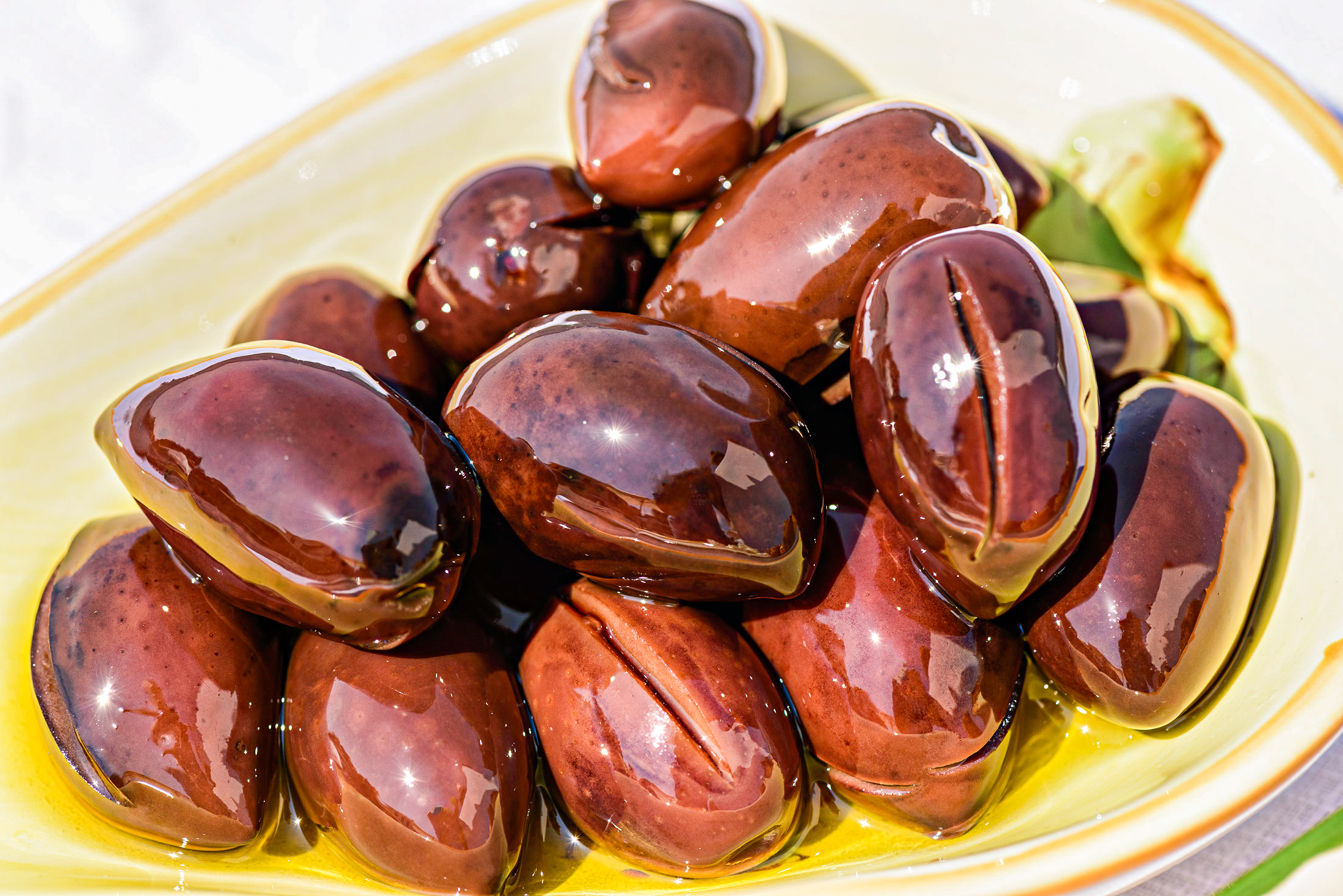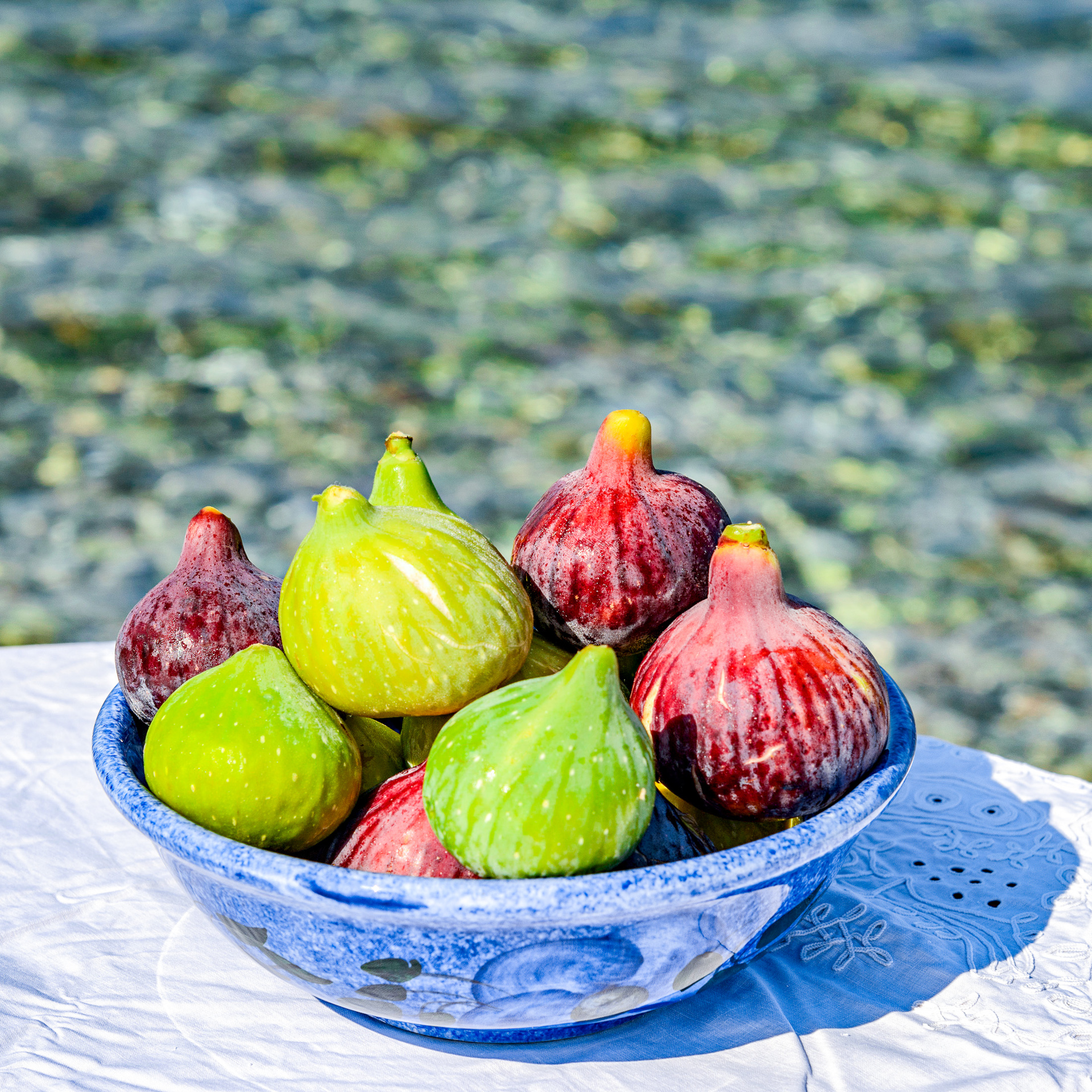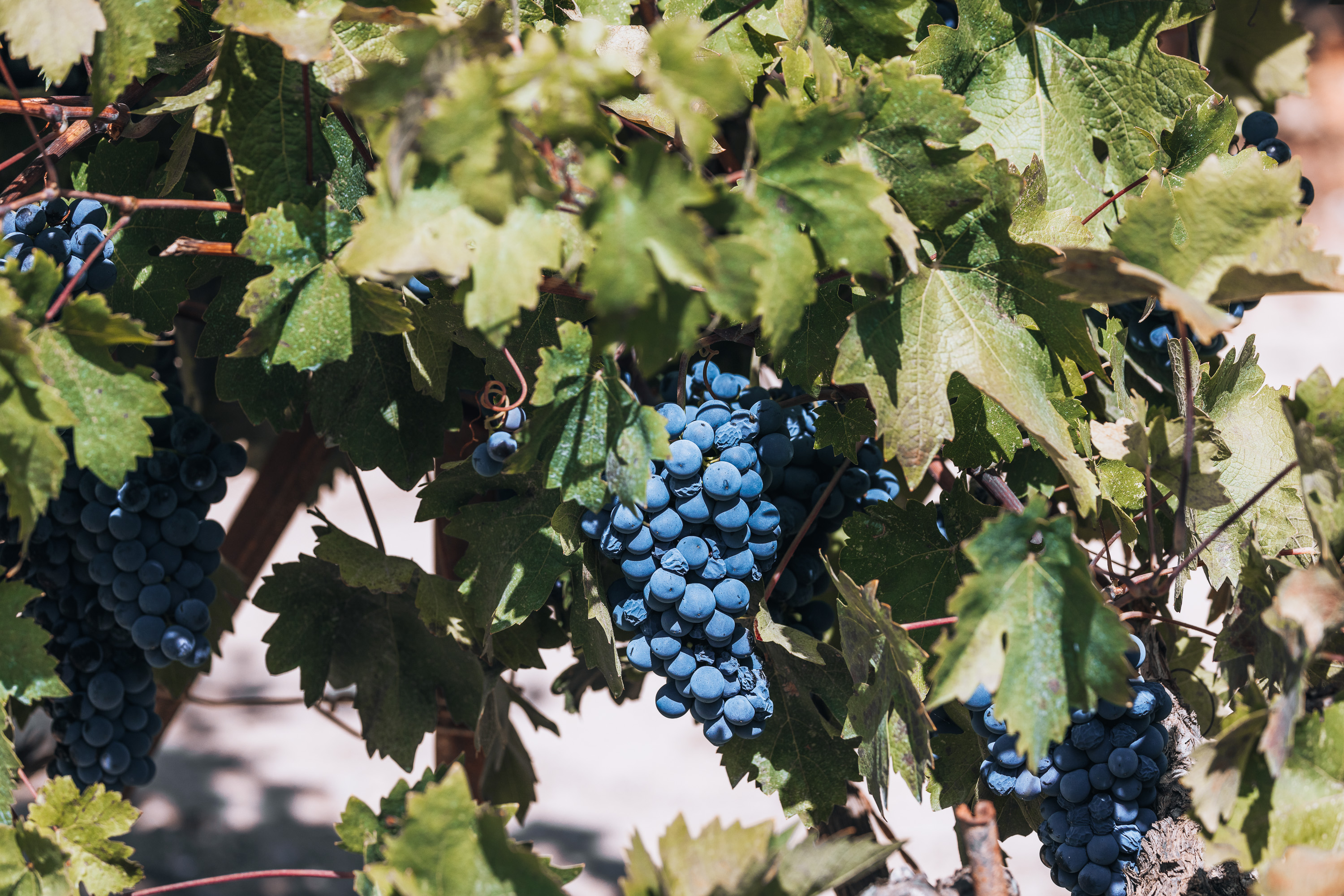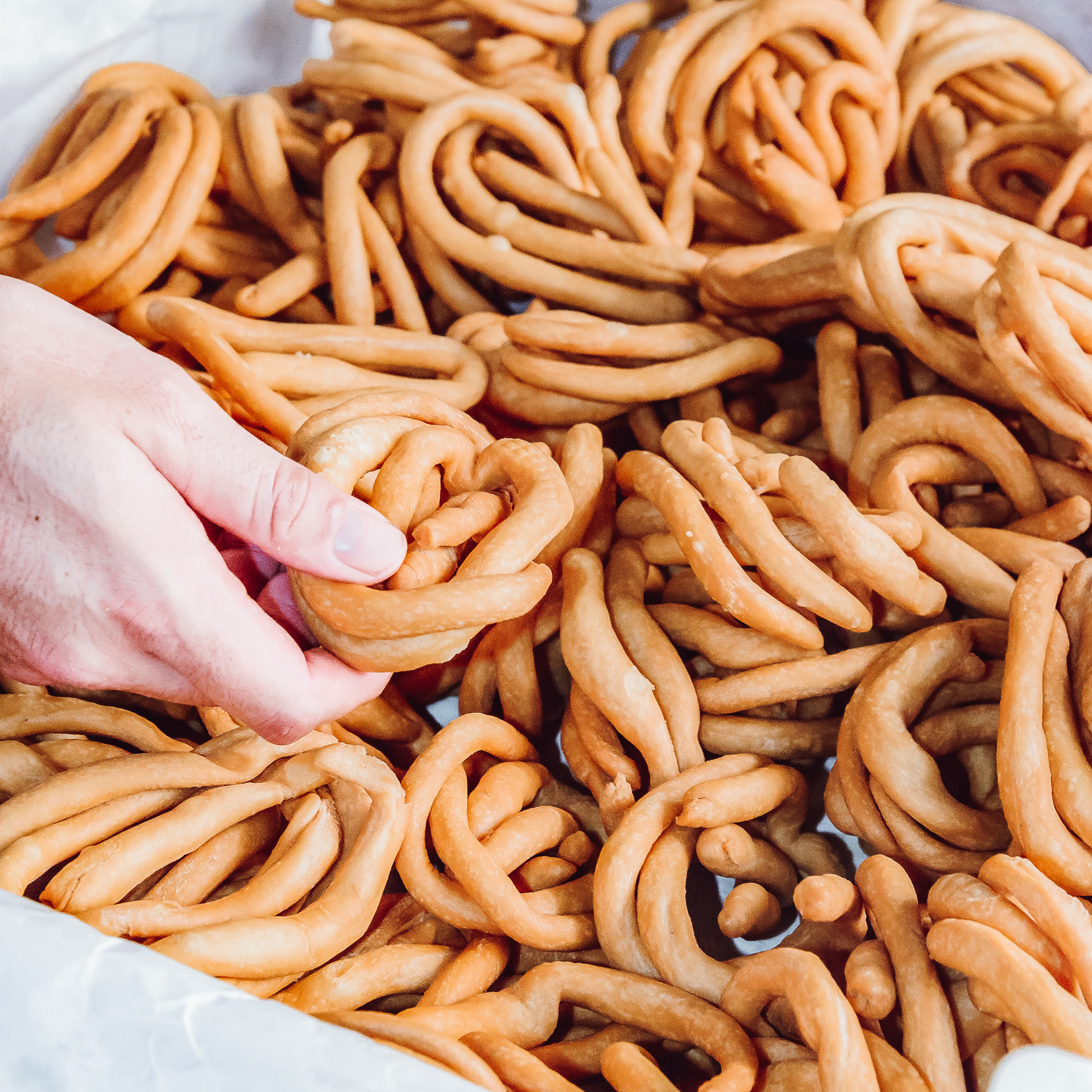Christmas Celebrations
Christmas and New Year tastes and traditional customs in the Peloponnese
Christmas in the Peloponnese is special! It’s a chance to see traditional customs coming to life, and to get closer to the culture and history of this beautiful corner of the earth. Some of the traditions might be familiar (but with a Greek twist of course) and others will be completely new to you. But one thing is certain -you’ll not go hungry!
Traditional Christmas treats
Christipsomo or "bread of Christ" is still made in many towns and villages in the Peloponnese. It is a fluffy white bread which is baked on Christmas Eve with special yeast and decorated with walnuts, smaller pieces of dough in the shape of a cross, and other dough decorations. On Christmas day, the head of the family makes the sign of the cross over the bread and shares it out between the family the guests. One interpretation of the custom is that it symbolises the Holy Communion where Christ gave the "bread of life to the whole human family".
Tiganides (also known as lalagia). These deep-fried dough strips are mainly made in the villages in the Mani on Christmas Eve. Traditionally the dough is rolled into very thick spaghetti-like strips and then folded back on itself four times to form a spiral. Next it goes into a big pan filled with very hot oil to be cooked over a flaming log fire set with good, thick logs to make it hot and long-lasting. The first of the tiganides to be ready, which is always big and round with a cross in the middle, is for Christ, the second is for the house and then the others are for the members of the family. In the old days, when the tiganides were ready, they were put in round copper baking trays. Then once they were drained they were placed in wicker baskets and hung up high out of the way.
Anyone who was mourning the recent death of a loved one did not make their own tiganides, but relatives and friends made sure they didn’t miss out by taking their own home-made tiganides round to the bereaved.
If you have already fallen in love with the Christmas sweets you’ve sampled elsewhere in Greece, don’t worry -you can find kourabiedes and melomakarona in the Peleponnese too! Kourabiedes or kurabies are round biscuits made from flour and butter and sprinkled generously with icing sugar. The name comes from the Persian qurabiye and the recipe was brought to Greece in 1924 by refugees from Asia Minor. And who can resist the other great Greek Christmas treat, melomakarona? These delicious, soft biscuits made with olive oil, orange juice, Christmas spices and honey, are the taste of Greek Christmas!
Customs and celebrations
In Greece, carols are not just for Christmas -they are for New Year and Epiphany as well, with each celebration having different songs. You will recognise a lot of the tunes as they are the same as those used all over the world, but others are Greek folk songs which have been passed down from generation to generation. And in another Greek twist, carols are one of the highlights of the season for children in cities and villages all over Greece.
On Christmas Eve, New Year’s Eve and the day before Epiphany, groups of excited children meet up in the morning wearing Christmas hats, tinsel and whatever else they could find to add some Christmas cheer. The older children are usually very happy to take along younger brothers or sisters for added cuteness, so mixed groups from about age 8 to 18 set off round the houses and the businesses in their neighbourhood to sing carols.
You could say this was the Greek version of guising or trick and treat as the kids knock on doors, ask if they can sing, and then launch into a carol (usually sung to the tune of Jingle Bells) accompanied by enthusiastic banging on the obligatory triangles and occasionally even by harmonicas, guitars or accordions.
In the old days, householders would give them Christmas goodies such as kourabiedes or melomakarona, but nowadays people give money (plus a fairly constant supply of Christmas treats to help the kids keep their strength up).
The Nemea area in Corinthia has its own special tradition, the psyokori. On Christmas Day when the family returns home from church, their teenage daughter will be waiting for them with traditional treats such as melomakarona, traditional fried bread pancakes, kourabiedes and liqueurs.
New Year's Eve: First-footing Greek-style. The Greek custom of "podariko" is very similar to the Scottish tradition of first-footing, but there is no coal involved and the first person to cross the threshold after New Year always has to be careful to go in with the right foot first. It is important to be first-footed by the “right” person, but in Greece the best first-footers are young children or people who are blessed with good luck and considered to be pure of heart. If you make sure that the first-footing tradition is carried out properly, the household will flourish for the whole of the year and avoid illness and death.
The pomegranate is the real star of another interesting (and somewhat messier) New Year tradition which started in Messina and has spread to many other areas in Greece. On New Year’s day, the family gathers round and the head of the household throws a pomegranate onto the doorstep with enough force to split the pomegranate open and for all the seeds to go flying everywhere! The old people used to say: "with health, happiness and joy in the new year, and may our pockets be filled all year with as many coins as there are seeds in the pomegranate." If the seeds are crisp and deep red, then the New Year will be happy and blessed.
In some villages in Arcadia, on the first day of the year people leave food out on the water fountains. This food is “for the Fates”, the three sisters in ancient Greek mythology who make sure that all mortals live out their destiny. If the food has disappeared by the next day, then the new year is going to be a good one.
Epiphany customs
The kallikantzaroi are mischievous elves or goblins who spend nearly all year underground, trying to saw through the roots of the tree which supports the Earth itself. They only venture out above ground between Christmas Eve and Epiphany, when they amuse themselves by getting into peoples’ houses and causing all sorts of trouble. They love to move furniture around and steal Christmas treats, but their very favourite thing of all is to spoil peoples’ Christmas cooking!
Thankfully, there are various traditional ways to keep the kallikantzaroi at bay. You can put branches over the fireplace so they can’t get in through the chimney, and cover up all the sweets and treats so that if they do manage to get in at least they won’t eat everything. And even in the worst-case scenario, the kallikantzaroi are driven away on Epiphany when the priest visits the house to consecrate it with holy water. At that point they scuttle back underground to finish off cutting through the roots of the Tree only to find that while they’ve been running riot above ground the tree has recovered and regrown its roots. So, they get back to work and start sawing away – until next Christmas.
The origins of the kallikantzaroi are far from clear, but some folklorists believe that they are descendants of the ancient cloven-footed god Pan or the Satyrs and crossed over from Greek mythology to Christianity.
The "yiala-yiala" in Ermioni. You could say that Ermioni celebrates Epiphany with a splash! The celebrations begin the evening before Epiphany when the young men from the town who are due to start their national service meet at the harbour and decorate the fishing boats with myrtle leaves and palm fronds. Then in the evening, things get livelier as they go around the whole village from house to house, dressed in traditional sailors’ costumes and singing the traditional song "yiala-yiala". Everyone wishes them well and gives them a drink or a snack to see them on their way.
Come the morning, the whole town gathers at the harbour to see the priest bless the sea. The young men, still in their sailors’ costumes and still singing, are now on the fishing boats, rocking them from side to side. The minute the priest throws the cross and the icon of the Virgin Mary into the sea, all the young men jump off the boats into the freezing cold sea to try and retrieve them. Whoever finds the cross and the icon receives a special blessing from the priest and is also given a golden cross as a souvenir.










